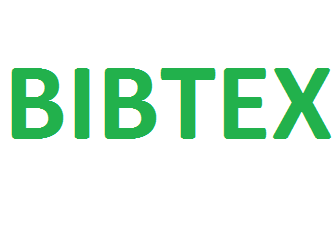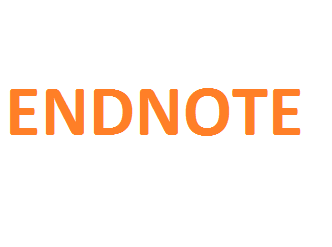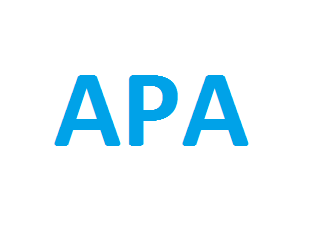
The Academic Perspective Procedia publishes Academic Platform symposiums papers as three volumes in a year. DOI number is given to all of our papers.
Publisher : Academic Perspective
Journal DOI : 10.33793/acperpro
Journal eISSN : 2667-5862
ANALYSIS OF PARAMETERS AFFECTING THE COMPRESSIVE STRENGTH OF SLA-PRINTED LATTICE STRUCTURES FOR BIOMEDICAL APPLICATIONS
Abstract
This study investigates the effects of lattice density, lattice structure, and lattice angle on the compressive strength of SLA-printed lattice structures designed for biomedical applications. Specimens were fabricated with 20%, 30%, and 40% lattice densities, at 30°, 60°, and 90° lattice angles, and with three different lattice geometries (Gyroid, Cross, and X-Cell). The mechanical properties of the specimens were evaluated through compressive testing in accordance with ASTM D695 standards.The results indicate that lattice density is the most significant factor influencing compressive strength (p = 0.006, F = 177.62), whereas lattice angle has no statistically significant effect (p = 0.637, F = 0.57). The highest compressive strength (33.69 MPa) was achieved with the specimen having 40% lattice density, 90° lattice angle, and Cross lattice structure.The specific strength analysis revealed that the most optimal specimen for lightweight yet strong biomedical lattice structures was the one with 40% lattice density, 90° lattice angle, and Cross lattice structure (11.86 MPa/g). These findings provide valuable insights for the design of optimized lattice structures in biomedical implants and lightweight engineering applications.
References
[1] A. M. McDermott, D. E. Mason, A. S. P. Lin, R. E. Guldberg, and J. D. Boerckel, "Influence of structural load-bearing scaffolds on mechanical load- and BMP-2-mediated bone regeneration," Journal of the Mechanical Behavior of Biomedical Materials, vol. 62, pp. 169-181, 2016, doi: 10.1016/j.jmbbm.2016.05.010.
[2] B. P. Chan and K. W. Leong, "Scaffolding in tissue engineering: general approaches and tissue-specific considerations," European Spine Journal, vol. 17, no. Suppl 4, pp. 467–479, Dec. 2008, doi: 10.1007/s00586-008-0745-3.
[3] J. Thomas, N. A. Alsaleh, M. Ahmadein, et al., "Graded cellular structures for enhanced performance of additively manufactured orthopedic implants," International Journal of Advanced Manufacturing Technology, vol. 130, pp. 1887–1900, 2024, doi: 10.1007/s00170-023-12843-7.
[4] R. Alkentar, N. Kladovasilakis, D. Tzetzis, and T. Mankovits, "Effects of pore size parameters of titanium additively manufactured lattice structures on the osseointegration process in orthopedic applications: A comprehensive review," Crystals, vol. 13, p. 113, 2023, doi: 10.3390/cryst13010113.
[5] F. J. O'Brien, "Biomaterials & scaffolds for tissue engineering," Materials Today, vol. 14, no. 3, pp. 88-95, 2011, doi: 10.1016/S1369-7021(11)70058-X.
[6] F. Liu, D. Z. Zhang, P. Zhang, M. Zhao, and S. Jafar, "Mechanical properties of optimized diamond lattice structure for bone scaffolds fabricated via selective laser melting," Materials, vol. 11, no. 3, p. 374, 2018, doi: 10.3390/ma11030374.
[7] S.-F. Tseng, I.-H. Wang, C.-M. Chang, C.-C. Lee, D.-Y. Yeh, T.-W. Chen, and A.-C. Yeh, "Mechanical characteristic comparison of additively manufactured Ti–6Al–4V lattice structures in biocompatible bone tissue growth," Materials Science and Engineering: A, vol. 857, p. 144045, 2022, doi: 10.1016/j.msea.2022.144045.
[8] S. Seehanam, S. Khrueaduangkham, C. Sinthuvanich, U. Sae-Ueng, V. Srimaneepong, and P. Promoppatum, “Evaluating the effect of pore size for 3D-printed bone scaffolds,” Heliyon, vol. 10, no. 4, p. e26005, Feb. 2024, doi: 10.1016/j.heliyon.2024.e26005.
[9] Y. AKIN, Ö. ÇERLEK, And S. ÇOBANER, “Mechanical Properties And Specific Strength Analysis Of Different Lattice Geometries In Additive Manufacturing,” Presented At The 4. BİLSEL International Harput Scientific Researches Congress , 2024.
[10] I. Mahapatra, N. Chikkanna, K. Shanmugam, J. Rengaswamy, and V. Ramachandran, "Evaluation of tensile properties of 3D-printed lattice composites: Experimental and machine learning-based predictive modelling," Composites Part A: Applied Science and Manufacturing, vol. 193, p. 108823, 2025, doi: 10.1016/j.compositesa.2025.108823.
[11] P. F. Egan, N. R. Khatri, M. A. Parab, and A. M. E. Arefin, "Mechanics of 3D-printed polymer lattices with varied design and processing strategies," Polymers (Basel), vol. 14, no. 24, p. 5515, Dec. 2022, doi: 10.3390/polym14245515.
[12] Waidi, Y.O. et al. (2024). Challenges and Perspective of Manufacturing Techniques in Biomedical Applications. In: Kumar, A., Kumar, A., Kumar, A. (eds) Applications of Biotribology in Biomedical Systems. Springer, Cham. https://doi.org/10.1007/978-3-031-58327-8_14.
[13] A. Harding, A. Pramanik, A. K. Basak, C. Prakash, and S. Shankar, “Application of additive manufacturing in the biomedical field—A review,” Annals of 3D Printed Medicine, vol. 10, p. 100110, 2023, doi: 10.1016/j.stlm.2023.100110.
[14] K. Han, N. F. Aktaş, And A. Tüylü, “Investigation Of Compressive Behavior Of Different Lattice Structures Produced With Abs-Like Resin Using Sla Technology,” Presented At The 4. Bilsel International Harput Scientific Researches Congress, Elaziğ, 2024.
[15] Ali, F., Kalva, S.N. & Koc, M. Advancements in 3D printing techniques for biomedical applications: a comprehensive review of materials consideration, post processing, applications, and challenges. Discov Mater 4, 53 (2024). https://doi.org/10.1007/s43939-024-00115-4
Cite
-
 @article{acperproISITES2025ID32, author={HAN, Kubilay and TANYERİ, Burak and ÇAY, Yusuf}, title={ANALYSIS OF PARAMETERS AFFECTING THE COMPRESSIVE STRENGTH OF SLA-PRINTED LATTICE STRUCTURES FOR BIOMEDICAL APPLICATIONS}, journal={Academic Perspective Procedia}, eissn={2667-5862}, volume={6}, year=2025, pages={165-175}}
@article{acperproISITES2025ID32, author={HAN, Kubilay and TANYERİ, Burak and ÇAY, Yusuf}, title={ANALYSIS OF PARAMETERS AFFECTING THE COMPRESSIVE STRENGTH OF SLA-PRINTED LATTICE STRUCTURES FOR BIOMEDICAL APPLICATIONS}, journal={Academic Perspective Procedia}, eissn={2667-5862}, volume={6}, year=2025, pages={165-175}} -
 %0 Academic Perspective Procedia (ACPERPRO) ANALYSIS OF PARAMETERS AFFECTING THE COMPRESSIVE STRENGTH OF SLA-PRINTED LATTICE STRUCTURES FOR BIOMEDICAL APPLICATIONS% A Kubilay HAN , Burak TANYERİ , Yusuf ÇAY% T ANALYSIS OF PARAMETERS AFFECTING THE COMPRESSIVE STRENGTH OF SLA-PRINTED LATTICE STRUCTURES FOR BIOMEDICAL APPLICATIONS% D 1/6/2025% J Academic Perspective Procedia (ACPERPRO)% P 165-175% V 6% N 2% R doi: -% U -
%0 Academic Perspective Procedia (ACPERPRO) ANALYSIS OF PARAMETERS AFFECTING THE COMPRESSIVE STRENGTH OF SLA-PRINTED LATTICE STRUCTURES FOR BIOMEDICAL APPLICATIONS% A Kubilay HAN , Burak TANYERİ , Yusuf ÇAY% T ANALYSIS OF PARAMETERS AFFECTING THE COMPRESSIVE STRENGTH OF SLA-PRINTED LATTICE STRUCTURES FOR BIOMEDICAL APPLICATIONS% D 1/6/2025% J Academic Perspective Procedia (ACPERPRO)% P 165-175% V 6% N 2% R doi: -% U -



